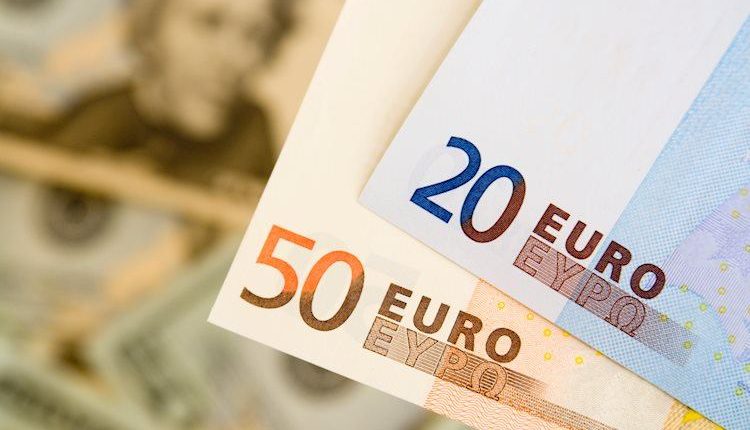- The Euro resumes the upside vs. the US Dollar.
- Stocks in Europe keep the positive mood so far.
- EUR/USD continues to target the 1.0700 barrier and above.
- The USD Index (DXY) puts the 105.00 support to the test.
- The Fed is expected to keep rates unchanged later on Wednesday.
- Weekly MBA Mortgage Applications are due later in the NA session.
- ECB’s Enria, Schnabel, Jochnick, McCaul, Elderson are due to speak.
The Euro (EUR) leaves behind Tuesday’s pullback against the US Dollar (USD), leading EUR/USD to regain some composure and post decent gains near the 1.0700 barrier on Wednesday.
On the other side of the equation, the Greenback trades in an inconclusive fashion in the low 105.00s when tracked by the USD Index (DXY) amidst cautiousness ahead of the key FOMC gathering in the North American session.
Market participants widely anticipate the Fed holding its interest rates steady amidst rising speculation of rate cuts at some point in Q2 2024.
In the European calendar, New Car Registrations in the European Union (EU) expanded 21.0% in the year to August, and Producer Prices in Germany rose 0.3% MoM in August and contracted 12.6% compared with the same month a year earlier.
In the US, MBA will release its usual weekly Mortgage Applications and the EIA will publish its weekly report on US crude Oil supplies.
Daily digest market movers: Euro pokes with 1.0700 ahead of FOMC
- The EUR gathers renewed buying interest against the USD.
- US and German yields trade marginally on the defensive.
- Consensus among economists see the Fed keeping rates unchanged on Wednesday.
- The PBoC kept its 1-Year and 5-Year Loan Prime Rate (LPR) unchanged.
- Markets continue to factor in probable rate cuts by the Fed in H1 2024.
- An impasse in the ECB’s hiking cycle appears to be gathering traction.
- UK inflation came in short of estimates in August.
Technical Analysis: Euro risks extra losses below the 200-day SMA
EUR/USD resumes the upside amidst the broader weekly choppiness and is expected to challenge the key 1.0700 region.
In case EUR/USD breaches its September 14 low of 1.0631, there is a possibility that it may revisit the March 15 low of 1.0516 ahead of the 2023 bottom of 1.0481 from January 6.
On the upside, there is a minor resistance level at the September 12 high of 1.0767 prior to the more relevant 200-day Simple Moving Average (SMA) at 1.0828. If the pair manages to break above this level, it could continue its recovery to the temporary 55-day SMA at 1.0916, ahead of the August 30 top of 1.0945. The surpass of the latter could put a potential visit to the psychological level of 1.1000 back on the radar seconded by the August 10 peak of 1.1064. North from here, the pair could retest the July 27 high at 1.1149, before the 2023 top at 1.1275 seen on July 18.
As long as the EUR/USD remains below the 200-day SMA, there is a possibility that the pair may continue to experience downward pressure.
ECB FAQs
The European Central Bank (ECB) in Frankfurt, Germany, is the reserve bank for the Eurozone. The ECB sets interest rates and manages monetary policy for the region.
The ECB primary mandate is to maintain price stability, which means keeping inflation at around 2%. Its primary tool for achieving this is by raising or lowering interest rates. Relatively high interest rates will usually result in a stronger Euro and vice versa.
The ECB Governing Council makes monetary policy decisions at meetings held eight times a year. Decisions are made by heads of the Eurozone national banks and six permanent members, including the President of the ECB, Christine Lagarde.
In extreme situations, the European Central Bank can enact a policy tool called Quantitative Easing. QE is the process by which the ECB prints Euros and uses them to buy assets – usually government or corporate bonds – from banks and other financial institutions. QE usually results in a weaker Euro.
QE is a last resort when simply lowering interest rates is unlikely to achieve the objective of price stability. The ECB used it during the Great Financial Crisis in 2009-11, in 2015 when inflation remained stubbornly low, as well as during the covid pandemic.
Quantitative tightening (QT) is the reverse of QE. It is undertaken after QE when an economic recovery is underway and inflation starts rising. Whilst in QE the European Central Bank (ECB) purchases government and corporate bonds from financial institutions to provide them with liquidity, in QT the ECB stops buying more bonds, and stops reinvesting the principal maturing on the bonds it already holds. It is usually positive (or bullish) for the Euro.
Read the full article here

